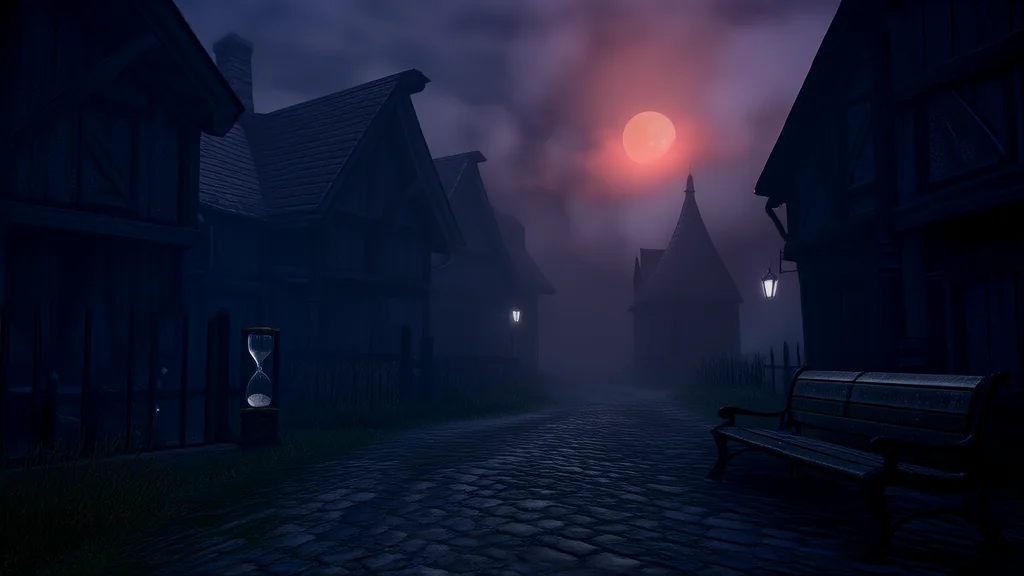🔮 Weird Tales & Urban Legends
The Vanishing Hourglass and the Secret of Black Hollow's Silent Night

Every year, on the night of the winter solstice, the old town of Black Hollow would fall silent. Not a single car passed through its winding streets, and no lights flickered in the windows of its abandoned houses. The townspeople called it "The Quiet Night," a time when the veil between worlds was thin, and the past whispered to those who dared to listen.
Among the many local legends, one stood out: the tale of the Vanishing Hourglass. It was said that in the heart of the town’s forgotten cemetery, buried beneath a moss-covered stone, lay an hourglass filled with sand that never ran out. Those who found it were promised a glimpse into their own future—but only if they could survive the moment the last grain fell.
Lila Hart had always been drawn to the stories. A freelance journalist with a penchant for the bizarre, she had spent years chasing rumors of lost artifacts and ghostly encounters. When she stumbled upon an old journal in a dusty antique shop, she knew she had found something special. The pages spoke of the hourglass, its origins traced back to a reclusive clockmaker named Elias Thorn, who had disappeared in 1897 under mysterious circumstances.
Curiosity led her to Black Hollow, where the townspeople avoided eye contact and spoke in hushed tones. They warned her not to go near the cemetery after dusk, but Lila was undeterred. She followed the journal’s instructions, which described a specific path through the woods leading to the grave of Elias Thorn.
The forest was thick with mist, and the air smelled of damp earth and something older—something like memory. As she approached the grave, the temperature dropped sharply, and the wind seemed to carry voices just beyond hearing. The stone was carved with a single phrase: *Time waits for no one.*
She dug carefully, her hands trembling as she uncovered the hourglass. Its glass was clear and flawless, and the sand inside shimmered with an unnatural light. As she held it in her palm, a strange sensation washed over her—a feeling of being watched, not by eyes, but by time itself.
Suddenly, the hourglass began to glow. The sand started to fall, slowly at first, then faster, until it was a blur of golden light. Lila felt herself pulled forward, as if the hourglass had opened a door in the air. When she looked up, she was no longer in the cemetery.
Instead, she stood in a vast, empty room with walls made of shifting shadows. In the center, a mirror hung, reflecting not her face, but a version of herself—older, wearier, and wearing a ring she didn’t recognize. Behind her, a man stood, his features blurred, but his voice was clear.
“You found it,” he said.
“I… I don’t understand,” Lila stammered.
“You were meant to,” he replied. “But you must choose.”
Before she could ask what he meant, the mirror shattered, and she was back in the cemetery, the hourglass now empty. The wind howled around her, and the trees seemed to lean in, listening.
When she returned to the town, everything had changed. The people no longer avoided her, but they looked at her with a mix of fear and recognition. The shops were gone, the streets empty, and the sky above was a deep, unnatural blue. No one else remembered the town, but Lila did.
She kept the hourglass, though it no longer worked. Every solstice, she placed it on the windowsill, watching the light dance across its surface. She never saw the man again, but sometimes, in the reflection of the glass, she glimpsed a figure standing behind her—watching, waiting.
And every year, as the last grain of sand slipped away, she wondered if she had chosen correctly—or if she had merely become part of the story.
发布于 en
🔗
相关站点
- AI Blog — AI 趋势与技术新闻